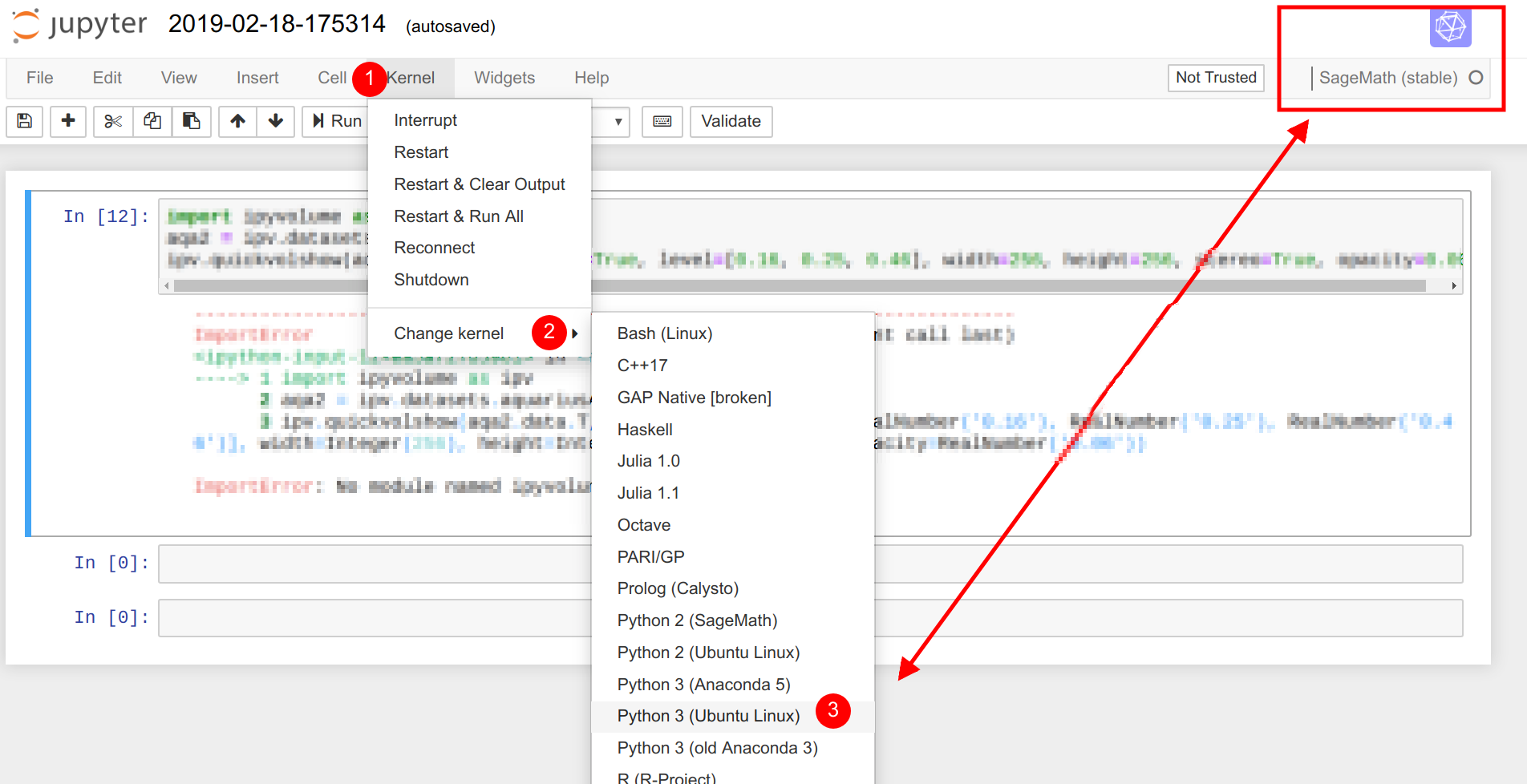

- #Jupyterlab r kernel how to
- #Jupyterlab r kernel install
- #Jupyterlab r kernel code
- #Jupyterlab r kernel windows
#Jupyterlab r kernel code
To see if R installed correctly, open a new notebook in VS Code (open the Command Palette with Cmd-Shift-P, or by clicking on the wheel in the bottom left and selecting Command Palette, then type Jupyter Create New Notebook).
#Jupyterlab r kernel windows
Similarly, using Cmder on Windows you need to type something like (depending on installed version): /c/Program Files/R/R-3.6.0/bin/R.exe. On a Mac, doing this requires typing something like the following into your command line (depending on exactly where R is installed on your system): /Applications/R.app/Contents/MacOS/R. If you can’t open R by just typing R, you have to launch it by putting in the absolute path to your R installation. Don’t open it by double clicking its icon! Open R by opening your command line tool (Oh-My-Zsh on Mac, Cmder in Windows) and typing R.
#Jupyterlab r kernel install
If you do not have R installed, download and install it here. Once that’s done, we’re ready to setup R to work with Jupyter! To setup R to work with Jupyter Notebooks, though, we have to do a real jupyter installation. Install Jupyter with miniconda ¶Įven though we’ve been using jupyter notebooks in VS Code so you might think you’ve already installed jupyter, VS Code is just using a little version of jupyter that comes bundled with the editor.
#Jupyterlab r kernel how to
That means that you can use Jupyter notebooks for more than Python! In this reading, I’ll show you how to setup R to work with Jupyter Notebooks. In the Jupyter ecosystem, the program being used to actually run your analysis (i.e. Python, R) is referred to as a kernel. This makes it possible to create one interface (a text editor, a window where results are displayed, etc.) that can be used to run your analyses in any number of different programs. These packages can be installed by running the code below in the R console.As we discussed before, the idea of Jupyter is to separate the interface you are working with from the underlying programming language doing your analysis. Uuid: Tools for generating and handling of UUIDs (Universally Unique Identifiers).ĭigest: digest provides `hash’ function summaries for GNU R objects. Notably, pbdZMQ should allow for the use of ZeroMQ on Windows platforms.ĭevtools: Collection of package development tools. PbdZMQ: pbdZMQ is an R package providing a simplified interface to ZeroMQ with a focus on client/server programming frameworks. This package was inspired by the ‘chalk’ ‘JavaScript’ project. Colors and highlighting can be combined and nested. Lastly, open the work folder and open rdpapisrplotlynotebook.ipynb example notebook file, then run through each notebook cell.

‘ANSI’ color support is automatically detected. The jupyterrdprplotly container will run the Jupyter server and print the server URL in a console, click on that URL to open the JupyterLab application in the web browser. Įvaluate: Parsing and evaluation tools that make it easy to recreate the command line behavior of R.Ĭrayon: Colored terminal output on terminals that support ‘ANSI’ color and highlight codes. Designed to be used from a running ‘IRkernel’ session. IRdisplay: An interface to the rich display capabilities of ‘Jupyter’ front-ends (e.g. Repr: String and binary representations of objects for several formats mime types. There are seven packages we need to install to setup the R Kernel in the Jupyter Lab environment. Step 2 - Install the necessary R packages Under Other section, there are also options for starting a bash shell session, creating new text or markdown files, or getting contextual help. Select Launch for the IPython Notebook (same as. Python is run via Jupyter’s kernel, which you can read about here. If everything went well, you should be able to start the Jupyter notebook from the launhcer (see icon below). The Anaconda environment has sections for opening a Python Kernel in This should open your web browser with the following display in your browser.


 0 kommentar(er)
0 kommentar(er)
